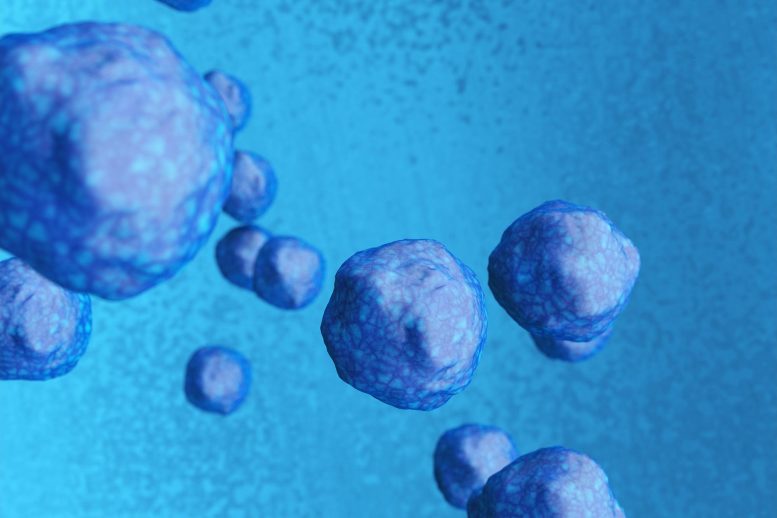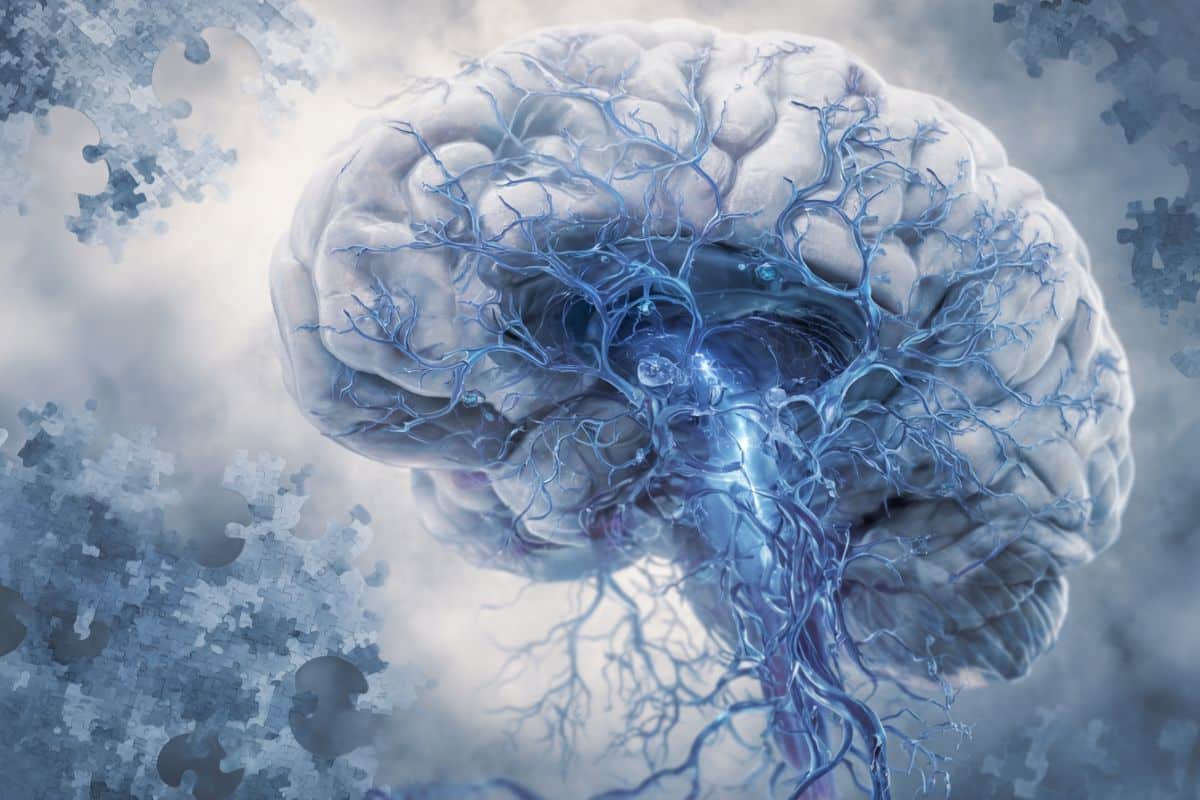
A Phase 1 clinical trial has shown that an antibody developed at Stanford Medicine can prepare patients for stem cell transplantation while avoiding toxic side effects.
A phase 1 clinical trial has demonstrated that an antibody treatment created at Stanford Medicine can safely prepare patients for stem cell transplants without the need for busulfan chemotherapy or radiation, both of which are highly toxic.
The trial focused on children with Fanconi anemia, a rare genetic disorder that makes conventional stem cell transplantation especially dangerous. Although the study tested this new protocol in Fanconi patients, the researchers believe it could also benefit people with other genetic conditions that require transplants.
“We were able to treat these really fragile patients with a new, innovative regimen that allowed us to reduce the toxicity of the stem cell transplant protocol,” said co-senior author Agnieszka Czechowicz, MD, PhD, assistant professor of pediatrics. “Specifically, we could eliminate the use of radiation and genotoxic chemotherapy called busulfan, with exceptional outcomes.”
Published online July 22 in Nature Medicine, the trial used an antibody-based approach, in combination with other drugs, to carry out transplants for three children with Fanconi anemia. Each patient has now been followed for two years and is doing well.
“If they don’t get a transplant in time, Fanconi anemia patients’ bodies eventually will not make blood, so they die of bleeding or infections,” explained co-first author Rajni Agarwal, MD, professor of pediatric stem cell transplantation. “The reason I am so excited about this trial is that it is a novel approach to help these patients, who are very vulnerable.”

Normally, before a transplant can take place, diseased bone marrow must be cleared out, usually through chemotherapy or radiation. In this study, however, patients instead received antibodies targeting CD117, a protein found on blood-forming stem cells. The antibody, known as briquilimab, successfully eliminated the patients’ stem cells without causing the toxic side effects associated with traditional conditioning treatments.
Other authors of the study included co-first author Alice Bertaina, MD, PhD, the Lorry I. Lokey Professor, and co-senior author Matthew Porteus, MD, PhD, the Sutardja Chuk Professor in Definitive and Curative Medicine.
Decades of research leads to safer transplant
The Stanford Medicine researchers built on decades of discoveries to design a safer and more widely accessible method for stem cell transplantation.

Czechowicz began studying blood-forming stem cells in 2004, as an undergraduate in the laboratory of Irving Weissman, MD, the Virginia and D.K. Ludwig Professor in Clinical Investigation in Cancer Research and then-director of Stanford’s Institute for Stem Cell Biology and Regenerative Medicine. Their early work examined CD117, a protein that controls stem cell growth and development. They demonstrated that an antibody targeting CD117 could block the growth of these cells and eliminate them in mice without exposing the animals to the dangers of chemotherapy or radiation. Working with other Stanford scientists, they later identified the clinical antibody version now used in the current trial.
The trial also addressed a second barrier to transplantation. In the past, roughly 35% to 40% of patients who required a stem cell transplant were unable to receive one because they lacked a fully matched donor. To overcome this, researchers altered the donated bone marrow before transplant. They enriched it with CD34+ blood-forming stem cells and removed alpha/beta T-cells, a type of immune cell that can trigger graft-versus-host disease — a condition in which donor immune cells attack the recipient. This approach, first developed by Bertaina and colleagues prior to her arrival at Stanford, makes it possible to use half-matched donors, such as a parent, greatly increasing the donor pool.
“We are expanding the donors for stem cell transplantation in a major way, so every patient who needs a transplant can get one,” explained Rajni Agarwal, MD.
The first patient to benefit from these advances was Ryder Baker, an 11-year-old from Seguin, Texas. Ryder underwent a stem cell transplant at Lucile Packard Children’s Hospital Stanford in early 2022 as part of the trial. Since then, his condition has improved dramatically. “He was so tired, he didn’t have stamina. It’s completely different now,” said his mother, Andrea Reiley, adding that Fanconi anemia “doesn’t slow him down like it used to.”
Now in sixth grade, Ryder has been channeling his renewed energy into athletics. He enjoys pickleball and was named “Up and Coming Player” on his school’s soccer team.
The researchers hope Ryder will be the first of many children whose lives are transformed by this approach.
“Bone marrow or stem cell transplants are most commonly used in blood cancers, in which the bone marrow is full of malignant cells and patients have no other options,” Czechowicz said. “But as we’re making these transplants better and safer, we can expand them to more patients including those with many different diseases.”
A disease of DNA repair
Fanconi anemia interferes with DNA repair. One consequence is impaired development of blood cells, including oxygen-carrying red blood cells; white blood cells needed for immune function; and platelets, which help the blood clot. Patients experience fatigue, reduced growth, frequent infections, and more bruising and bleeding than normal. Eventually, their blood cell production is so diminished they have a life-threatening condition known as progressive bone marrow failure, signs of which develop in about 80% of Fanconi anemia patients by age 12.
Children with Fanconi anemia can become stuck in a catch-22: A stem cell transplant can prevent and treat bone marrow failure, but because their DNA-repair machinery works so poorly, patients are extremely vulnerable to side effects — including cancer — from the chemotherapy or radiation used to prepare for these transplants.
“Right now, nearly all of these patients get secondary cancers by the time they’re 40,” Czechowicz said, adding that her team hopes their new approach will reduce those rates. Fanconi anemia patients are also more vulnerable than other people to complications of graft-versus-host disease.

The three trial participants were all younger than 10 when they received their transplants. They were of different racial/ethnic backgrounds and had different gene mutations underlying their Fanconi anemia.
Each patient received a single intravenous infusion of the antibody 12 days before they were scheduled to receive donated stem cells. Closer to the transplant date, they received immune-suppressing medications typically given before stem cell transplant, but no radiation or busulfan chemotherapy that is typically part of the treatment regimen.
Each patient was then given a stem cell transplant consisting of cells that had been donated by a parent, depleted of alpha/beta T-cells, and enriched for blood-forming stem cells. Within two weeks, the donated stem cells quickly took up residence in the patients’ bone marrow. No one experienced graft rejection — a transplant complication in which the patient’s immune system rejects the donated cells — and by 30 days after transplant, the healthy cells from the donors had almost completely taken over the patients’ marrow.
The researchers’ initial goal was to help patients reach 1% donor chimerism, meaning 1% of the bone marrow cells would come from the donor. But two years later, all three patients have close to 100% of their cells from their donors — far better than the researchers expected.
“We’ve been surprised by how well it’s worked,” Czechowicz said. “We were optimistic that we would get here, but you never know when you’re trying a new regimen.”
A medical pioneer
Even with the improved protocol, a stem cell transplant is a big challenge for kids like Ryder, requiring them to spend more than a month in the hospital and endure short-term side effects such as severe exhaustion, nausea, and hair loss.
“It was heartbreaking to see him go through things like that — I’d rather go through it than my child,” Reiley said, adding that, fortunately, Ryder remembers little of the experience. “I felt the heartbreak for him, and now he doesn’t have to.”
Since his transplant, Ryder has grown taller, gained weight, and become much less susceptible to run-of-the-mill germs, his mom said. “It used to be huge hits when he would get sick at all, and I really don’t have to worry about that anymore.”
Reiley has conversations with her son about how his experience as a medical pioneer is helping experts take better care of other kids. “I think he takes a lot of pride in that, too,” she said.
After more than three decades of administering stem cell transplants with the traditional approach, Agarwal said she loves explaining to patients’ families how much better the new options are.
“When I counsel families, their eyes start to shine as they think, ‘OK, we can avoid the radiation and chemo toxicity’,” she said.
The researchers are now conducting a phase 2 trial of the same protocol in additional children with Fanconi anemia. They also plan studies to test whether the new approach will work for other conditions, including Diamond-Blackfan anemia, another genetic disease that causes bone marrow failure.
Most cancer patients may still require some chemotherapy or radiation to rid them of malignant cells, said the researchers, who noted that another team at Stanford Medicine is testing whether the antibody can help elderly cancer patients who can’t tolerate full doses of radiation or chemotherapy because they are fragile or have diseases in addition to cancer.
“That population is often at a disadvantage,” Agarwal said. “It may provide us with a way to treat them with less intensity so it’s possible for them to get a transplant.”
The group is also working on next-generation approaches that may continue to improve the treatment regimen for patients with Fanconi anemia as well as other grievous diseases.
Reference: “Irradiation- and busulfan-free stem cell transplantation in Fanconi anemia using an anti-CD117 antibody: a phase 1b trial” by Rajni Agarwal, Alice Bertaina, Charmaine Soco, Janel R. Long-Boyle, Gopin Saini, Nivedita Kunte, Lyndsie Hiroshima, Yan Y. Chan, Hana Willner, Mark R. Krampf, Rofida Nofal, Giulia Barbarito, Sushmita Sen, Maite Van Hentenryck, Emily Walck, Amelia Scheck, Rhonda J. Perriman, Alisha Bouge, Elena Istomina, Hena Naz Din, Edna F. Klinger, Jerry C. Cheng, Marcin W. Wlodarski, Jaap J. Boelens, Judith A. Shizuru, Wendy W. Pang, Kenneth Weinberg, Robertson Parkman, Maria Grazia Roncarolo, Matthew Porteus and Agnieszka Czechowicz, 22 July 2025, Nature Medicine.
DOI: 10.1038/s41591-025-03817-1
Study funding came from anonymous philanthropic support and the California Institute of Regenerative Medicine. The antibody, briquilimab, was supplied by Jasper Therapeutics Inc. The Fanconi Cancer Foundation and the Stanford Clinical Trial program also provided clinical trial support and assisted with the execution of the study.
Never miss a breakthrough: Join the SciTechDaily newsletter.
Source link


